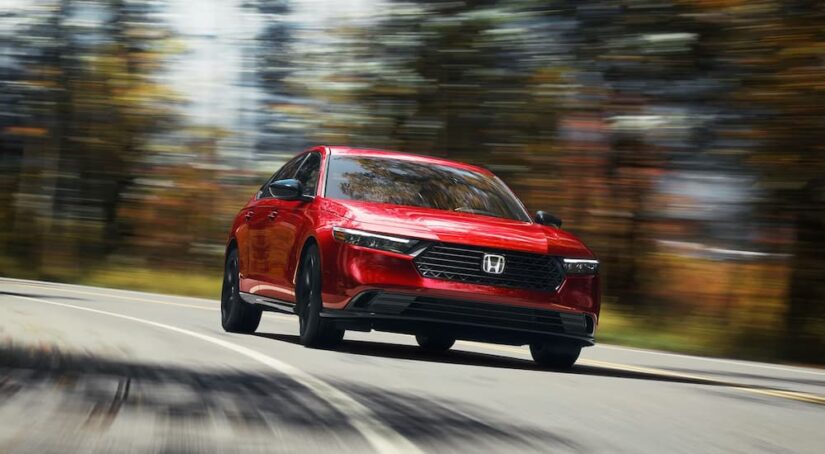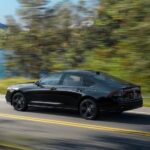Driving is liberating, wouldn’t you agree? But as liberating as it is, it is dangerous if not handled properly. When you’re driving on the road, you’re operating a hunk of metal that can weigh a couple of tons––it’s not a toy and even the most experienced drivers find themselves in a jam now and then. If you’ve never been in a collision before, you should consider yourself lucky. Automotive collisions – or “accidents,” as you likely know them, are all too common. The truth is, there will never be a time when there aren’t accidents, even when self-driving cars take over the road. However, modern vehicles tend to avoid accidents better because of state-of-the-art driver-assist tech. One of the best examples is the Honda Sensing suite––something you’ll find in every new model at your local Honda dealer.
The Honda Sensing suite is multi-faceted, and is composed of several advanced driver-assist features. First introduced with the 2015 Honda CR-V Touring, these vital features have become more accessible as the years have passed and are now standard on every Honda sold. As Honda Sensing has been around for a few years now, you’ve likely heard about the types of driver-assist features available in cars nowadays––or have seen a few commercials that highlight features like Collision Mitigation Braking.
Honda Sensing is built to compete with other safety suites that have taken the market by storm, including Ford Co-Pilot360, Chevy Safety Assist, Toyota Safety Sense, and more. If you purchase a model with Honda Sensing, you’ll be getting all the essentials at no extra cost. Some of the higher-trim Honda models have additional features to enhance the driving experience, but you’ll get all the basics with the standard Honda Sensing suite. I’ll get to those extras in a moment, but let’s start discussing Honda Sensing and what comes with it.
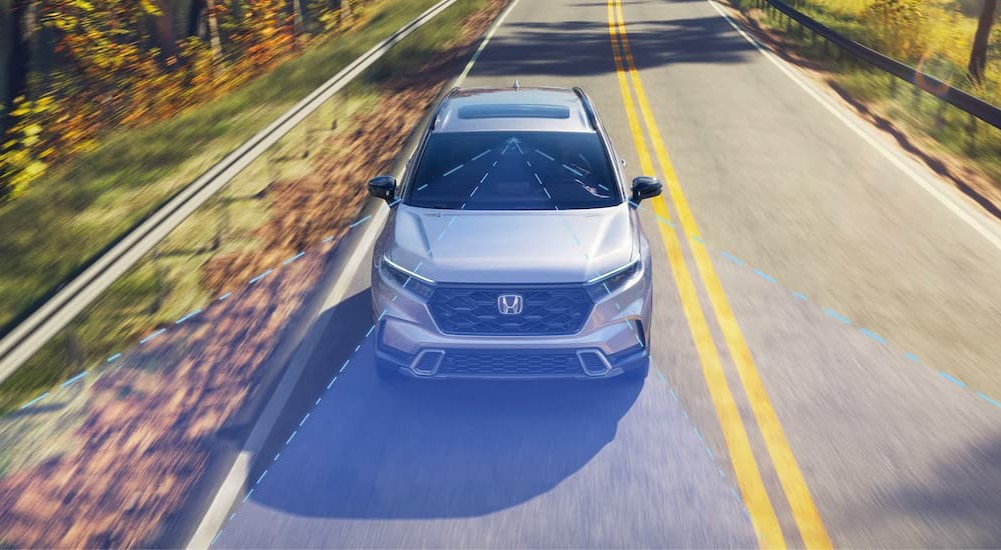
Collision Mitigation Braking System
A technology that has already prevented countless accidents is Honda’s Collision Mitigation Braking System (CMBS.) Honda models with Honda Sensing utilize forward-facing cameras and radars that identify obstructions ahead of your vehicle while you’re driving––in simple terms, your Honda will attempt to come to a quick stop when vehicles and pedestrians unexpectedly block your path. This could be because someone pulled out in front of your car or because you don’t slow down quickly enough when approaching a red light where another vehicle is waiting.
While the Collision Mitigation Braking System has active braking built in, it also has a passive alert system that warns when your Honda vehicle begins getting too close to the car in front. When you hear the alert system sounding, stop your vehicle. The active braking component is ultimately a failsafe if the driver doesn’t respond to the alert system. Avoiding accidents sometimes requires split-second reaction times, and what can react quicker than a computer?
Traffic Sign Recognition
One of the more unique features of Honda Sensing is Traffic Sign Recognition. The forward-facing camera actively seeks speed limit signs, and once you drive by one, a picture of the current speed limit will appear on either your dashboard or your Heads-Up Display (HUD) if your vehicle has one. This is particularly helpful when you are traveling in an unfamiliar area and need a reminder of the current speed limit.
Adaptive Cruise Control
Adaptive Cruise Control (ACC) is a more advanced take on traditional cruise control. The front-facing camera and radar are utilized when Adaptive Cruise Control is activated. Your Honda will scan the road ahead of you and dynamically adjust your speed to match the flow of the traffic. Regular cruise control simply maintains a set speed until you hit the brakes, at which point cruise control will be turned off. For years this is how we’ve been using cruise control, constantly turning it on and off to match the flow of traffic. Many people opt to not use cruise control because of it. With Adaptive Cruise Control, you don’t need to hit the brakes when a vehicle ahead of you is slowing down because Honda Sensing will do it for you. However, it gets even better. When the slower car ahead of you moves out of the way, your Honda will automatically accelerate until it reaches the speed you set when you activated Adaptive Cruise Control.
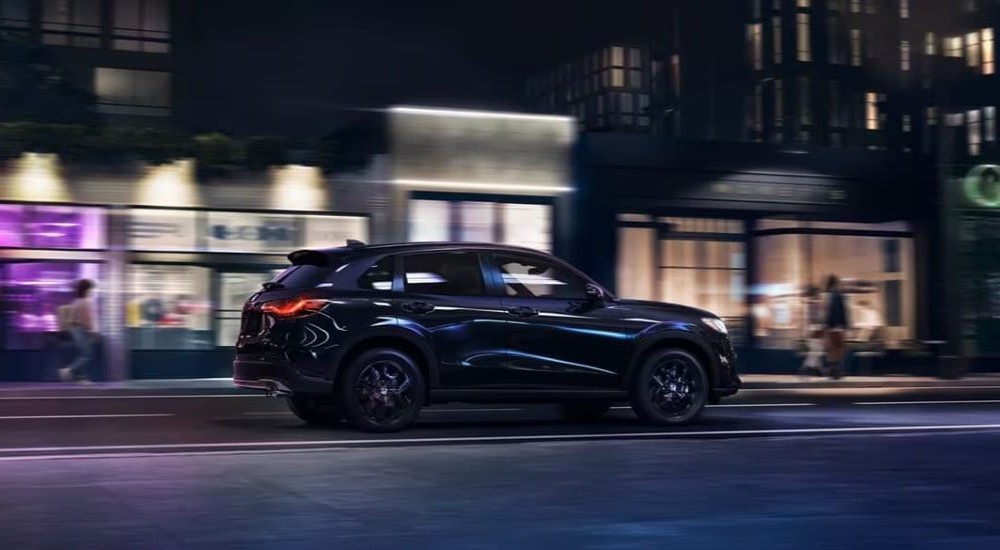
Road Departure Mitigation System
The Road Departure Mitigation System (RDM) is one of the driver-assist features built into Honda Sensing that helps maintain a steady drive by keeping you safely in your lane. If you begin veering off the road, the Road Departure Mitigation System will identify if you weren’t intending to pull over and respond with a warning and a combination of braking and steering inputs to keep you on the road. However, this system is not foolproof and cannot drive your car for you. It is merely another layer of safety technology designed to prevent you from accidentally driving off the road.
Lane Keeping Assist System
Taking the fundamental tech behind the Road Departure Mitigation System, including cameras, sensors, and assisted steering, Honda Sensing goes a step further with the Lane Keeping Assist System (LKAS). This technology is intended to help keep you centered in your lane when traveling at highway speeds on straight roads. It works like this: if you’re driving in the middle lane and begin to veer to your left or right, your Honda will provide mild steering inputs to straighten your car out. The Lane Keeping Assist System can help you avoid accidents like side-swiping vehicles in the lane next to you, but the primary purpose is to reduce driver workload on long or tedious trips.
Blind Spot Information System
The Blind Spot Information System (BSI) is one of the features that doesn’t come standard on every Honda model and is only available on higher trims. This technology uses radar sensors located in the rear of your car to monitor the surrounding traffic. If a vehicle is in your blind spot, you’ll see an indicator on your side mirror, and if you try to change lanes, it will warn you. Features like the Blind Spot Information System are there to give you an extra layer of safety, as the idea is that if the indicator is flashing, something is in your blind spot. If you do much highway travel, you’ll immediately notice the value of features like the Blind Spot Information System in the Honda Sensing suite.
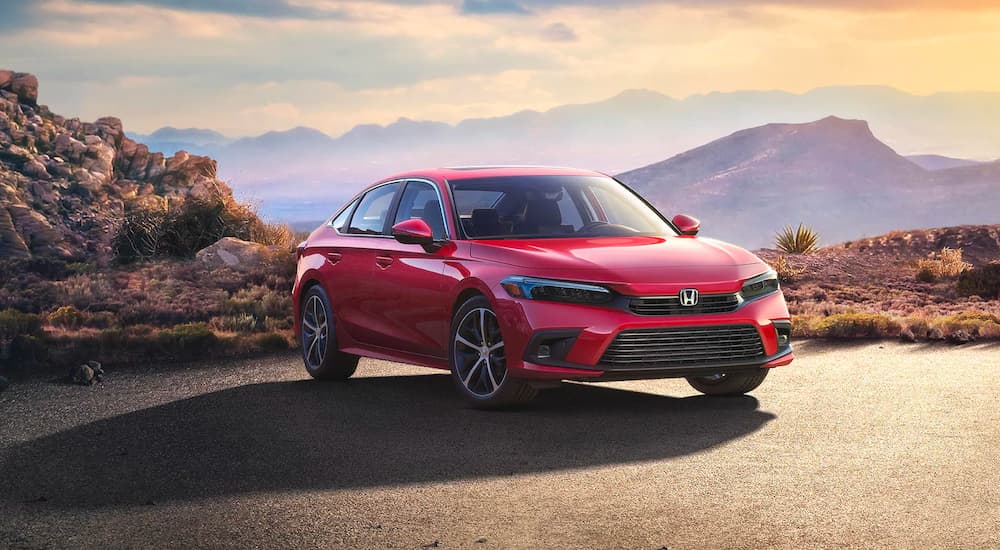
Cross Traffic Monitor
Another technology that doesn’t come standard on all models but is a great feature to put on your wish list is the Cross Traffic Monitor. This option uses the same tech and concept behind the Blind Spot Information System but only activates when you’re reversing your car. Backing up out of a parking lot is the other reason why you’d look over your shoulder, but by using the sensors on the back of your car, your Honda will notice and alert you to traffic crossing behind you. This is another feature that should be used in tandem with the looking-over-the-shoulder method, but it’s a fantastic way to double-check that you’re good to reverse your vehicle out of that parking space or your driveway.
The Next Pillar of Safety
Honda Sensing is pushing the industry forward toward a future where accidents happen less frequently, and many manufacturers have followed suit, introducing similar driver-assist suites. You may have gotten along so far without the features found in the Honda Sensing suite, but once you drive a vehicle with so many additions that improve your quality of life and general well-being on the road, you can’t look back. If the original pillars of safety include seatbelts, airbags, and driver vigilance, then technology suites like Honda Sensing are becoming the next pillar on that list.
